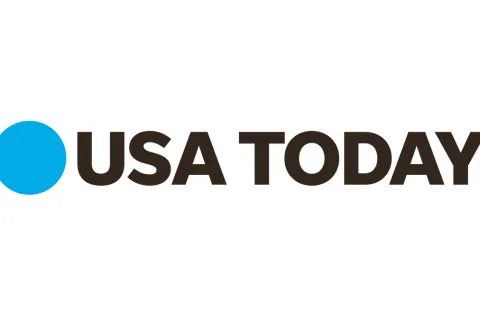The new normal in public transit and paratransit during COVID
Dr. Feeley is an autism transportation researcher and the Transportation Autism Project Manager at the Rutgers Center for Advanced Infrastructure and Transportation.
By Cecilia Feeley, Ph.D. September 10, 2020The following provides general tips for travel changes as a result of the coronavirus pandemic. For more information on accessing public transit and paratransit during COVID, visit the National Aging and Disability Transportation Center’s COVID-19 resources.
As COVID-19 pandemic lingers, we have had to alter many of our routine activities. Public transportation and paratransit are no exception. Travelling by public transit and paratransit also have new rules and requirements. This can be very difficult for people on the spectrum and the people who care for them. The number of adults on the spectrum using public transit and paratransit has been steadily increasing in recent years, and 2015 Rutgers survey of autistic adults in New Jersey found nearly 40 percent of adults on the spectrum used public transit and more than 26 percent used Access Link, NJ Transit's paratransit service.
How Transit Looks Different During COVID
Transit changes will vary state by state. In my home state of New Jersey, the governor is currently allowing transportation providers to operate at pre-COVID numbers, thus allowing for full buses and trains. However, many of the county transit agencies are keeping their passenger levels at reduced numbers for social distancing and safety. Plus, even though NJ is allowing the same number of riders as before COVID, many of the riders have not returned, so buses and trains are often less crowded than pre-COVID. Due to fewer riders and cleaning schedules, some transit agencies have reduced or changed routes and schedules.
Additionally, in most places indoor and even outdoor stations require you to wear your mask. If you are outdoors and plan to remove your mask, make sure it is OK for you to do so by asking a member of the transit staff. If you are unsure, it is best to keep the mask on. Remember that you will need to wear it when you board the vehicle. You should always have your mask on or have it handy.
Some autistic individuals I have spoken to since the COVID crisis said they found a positive side to wearing a mask on public transit. Since the face masks shield facial expressions, they also reduce much of the non-verbal communication one may be expected to notice. This can be helpful, so people are not expected to understand all the usual social cues. And with the addition of social distancing that is both required and expected, all social interactions are greatly reduced. For individuals that find these social interactions a lot of work, travelling may be more pleasant and relaxing since there are fewer people out, including on most public transit options. For some people with autism these changes make the trips and outings easier.
In addition to the environmental changes, many transit systems have new procedures and processes. For example, boarding the bus looks different and the process to pay the driver may have significantly changed. That means a whole new system and series of tasks have to be relearned - with the possibility of relearning a new series of tasks on a regular basis. Many buses have partitions to protect the drivers, which may be similar to what you see in stores.
In stations, waiting areas may have fewer seats or no seating at all. There are fewer people but you can no longer just choose an empty seat. Some transit agencies allow full capacity, while others have spaced seating and reduced capacity to enforce social distancing. This may mean that some seats are blocked off, or that riders can sit in every other row. Many times it is up to the passenger to know where to sit. Even if your bus does not fill up, it is still important to practice social distancing.
A Safe and Successful Ride
If travel is essential for you, it is important to plan ahead for new procedures, health and safety protocols, and service changes. Visit your local transit agency’s website for current policies and procedures. What is in place today might change by your next trip, so make sure you know the current routes and schedules. For example, in NYC the subways used to run 24 hours a day but trains are now shut down from 1 to 5 a.m. for deep cleaning.
As the impact of the pandemic evolves, new COVID rules may be relaxed, or conversely they may become stricter within a short time period. When reading through procedures, note where any tasks involved with riding public transit services have changed. For example, you may not be able to stop for a snack, you may have to wait to go into a store or you may not be able to leave the train to use the station facilities. These changes can be difficult for people who use public transit and paratransit.
One other change is that you may be restricted with eating or drinking at stations or on trains and buses. There may be designated areas where you can do this. Some people who need to stay hydrated use the straw method to slip the straw under their mask and sip their water or beverage. (If you know you will need your water you should practice this at home so you will be able to do it when at the bus stop or on public transit.)
Finally, when planning your trip, schedule more time to get where you’re going. New routes, schedules and rules can really impact your schedule. Some destinations may also require you to fill out a medical questionnaire and have someone take your temperature before you can even enter. These new steps and processes will also have to be factored into your commuting and travel time.
More Support Options
Many travel services and other providers offer remote and online travel training using virtual trips. Travel trainers are restricting in-person services to individuals who need to learn or relearn to access essential services or for employment, so you should see if this service is available to you if you need additional support. Travel training can also help you if your usual transit service has changed or you need to learn a new route or routine due to the impact of COVID.
Pullout/sidebar:
Transit Essential Items
-
Personal protective equipment (PPE): a mask you are comfortable wearing for the whole trip, hand sanitizer or gloves, and/or a face shield.
-
Form of payment: Prepare by downloading the transit agency app, purchasing your fare ahead of time, or planning how you will buy your ticket using new contactless systems.
-
Personal needs: Snacks or beverages, or other support tools you may need.








